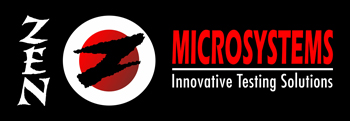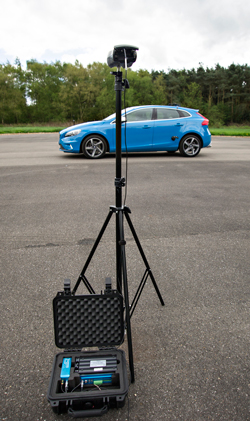ISO 362 AND ECE R41/ R51
ISO 362 defines the pass-by test procedures for measuring noise emitted by accelerating road vehicles, while the ECE R41 (motorcycle) and R51/R138 (automobile) standards regulate the limits of the vehicle exterior noise.
The Pass-By Noise test procedure involves an open-throttle acceleration test and a constant speed test (only for vehicles with a power-to-mass ratio higher than 25). ISO 362:2014 specifies 50 km/h at the microphone, to which the Additional Sound Emission Provision (ASEP) adds four extra runs past the microphones for every gear ratio – 24 tests for a 6-speed car.
The new type-approval procedures are designed to ensure that the vehicle’s sound levels do not significantly differ from the ISO pass-by test result under typical on-road driving conditions, at a broader range of speeds.
R138 ELECTRIC VEHICLE PASS BY NOISE
With electric vehicles being virtually silent at low speeds – typical of urban areas with lots of pedestrians and vulnerable road users – the new R138 regulation ensures that a basic sound level emanates from this type of automobile as a safety measure.
It follows the same procedures for R41 and R51, but introduces a minimum sound pressure level as well as the existing 75dBA maximum.
ACCELERATION TESTS
This test require the driver to apply full throttle between the lines AA’ and BB’. The selection of gear ratio depends on the vehicles acceleration potential as specified in the standard. The test must be repeated several times to prove a consistent average value.

CONSTANT SPEED TESTS
The constant speed test shall be carried out with the same gear(s) as specified in the acceleration test and a constant speed of 50 km/h ±1 km/h between AA’ and BB’. The tests must be repeated several times to prove a consistent average value.
ASEP
ASEP requires four additional runs past the microphones for every gear ratio. These are designed to capture the vehicle’s noise at four different speeds for every gear, from the lowest – a 20 km/h entry speed (10 metres before the microphone), up to an 80 km/h exit speed (10 metres after the microphone).
TEST SETUP
Although the test pass criteria are different between R41 and R51 testing, the test track layouts are the same as shown in Figure 1.
Microphones placed within the test area output to a VBOX Mini Input Module using the DC voltage output of the microphones. The Mini Input Module continuously transmits the converted sound readings to the VBOX 3i GPS data logger mounted on the test vehicle at 100 Hz using 2.4 GHz Telemetry Radios.
If using a laser light, it should be attached to the side of the vehicle under test and a reflective strip is placed a distance before the start test line AA’ to define the start and end lines of the test as shown in Figure 1.
These offset distances are input into the VBOX Test Suite Pass-by Noise plugins for the analysis to occur. You can use the system in both directions, just install another reflective strip on the other end of the test track so when you drive in the opposite direction it will also trigger.
Instead of using a laser light barrier to trigger the start of the test, a VBOX 3i RTK (VB3iSLR) can be used to set the start and finish lines when used with an RTK Base Station or NTRIP solution. This means that the test vehicle doesn’t have to come to a stop between test runs.
The R138 regulation requires conducting the tests in the forward and reverse direction. When using a VBOX 3i Dual Antenna, the VBOX Test Suite R138 plug-in can automatically detect the direction of travel of the vehicle and categorise the results for each prescribed test direction and speed. A single antenna VBOX 3i can still be used, however, the direction of travel will be assumed to always be in the forward direction.





 R41 – Single Mini Input Module Setup
R41 – Single Mini Input Module Setup


